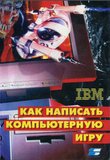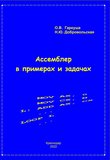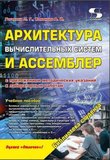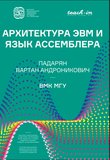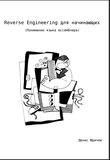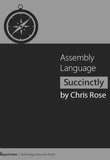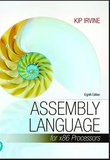-
.NET (.NET Core)
-
1C
-
APL
-
AWK
-
Agda
-
Agile/Scrum
-
Alef
-
Assembler
-
Basic
-
Beta Programming Language
-
Big Data/DataScience
-
C
-
C#
-
C++
-
CSS
-
Cobol
-
Crystal
-
D
-
Dart
-
DataBase (SQL)
-
Delphi
-
F#
-
Flutter
-
Fortran
-
GPT/AI/ИИ
-
GameDev
-
Git
-
Go (Golang)
-
HTML
-
Hacking and Security
-
Haskell
-
Java
-
JavaScript (JS)
-
Julia
-
Kotlin
-
Machine Learning (ML)
-
Natural language processing (NLP)
-
PHP
-
Pascal
-
Python
-
R
-
Ruby
-
Rust
-
Scratch
-
Swift
-
UML
-
UX/UI
-
Visual Basic
-
Wolfram
-
XML
-
АСУ
-
Проектирование/System Design
-
Сети/Network
-
Схемотехника/электронные схемы
-
.NET (.NET Core)
-
1C
-
APL
-
AWK
-
Agda
-
Agile/Scrum
-
Alef
-
Assembler
-
Basic
-
Beta Programming Language
-
Big Data/DataScience
-
C
-
C#
-
C++
-
CSS
-
Cobol
-
Crystal
-
D
-
Dart
-
DataBase (SQL)
-
Delphi
-
F#
-
Flutter
-
Fortran
-
GPT/AI/ИИ
-
GameDev
-
Git
-
Go (Golang)
-
HTML
-
Hacking and Security
-
Haskell
-
Java
-
JavaScript (JS)
-
Julia
-
Kotlin
-
Machine Learning (ML)
-
Natural language processing (NLP)
-
PHP
-
Pascal
-
Python
-
R
-
Ruby
-
Rust
-
Scratch
-
Swift
-
UML
-
UX/UI
-
Visual Basic
-
Wolfram
-
XML
-
АСУ
-
Проектирование/System Design
-
Сети/Network
-
Схемотехника/электронные схемы
Меню
x64 Assembly Language Step-by-Step: Programming with Linux. 4 Ed
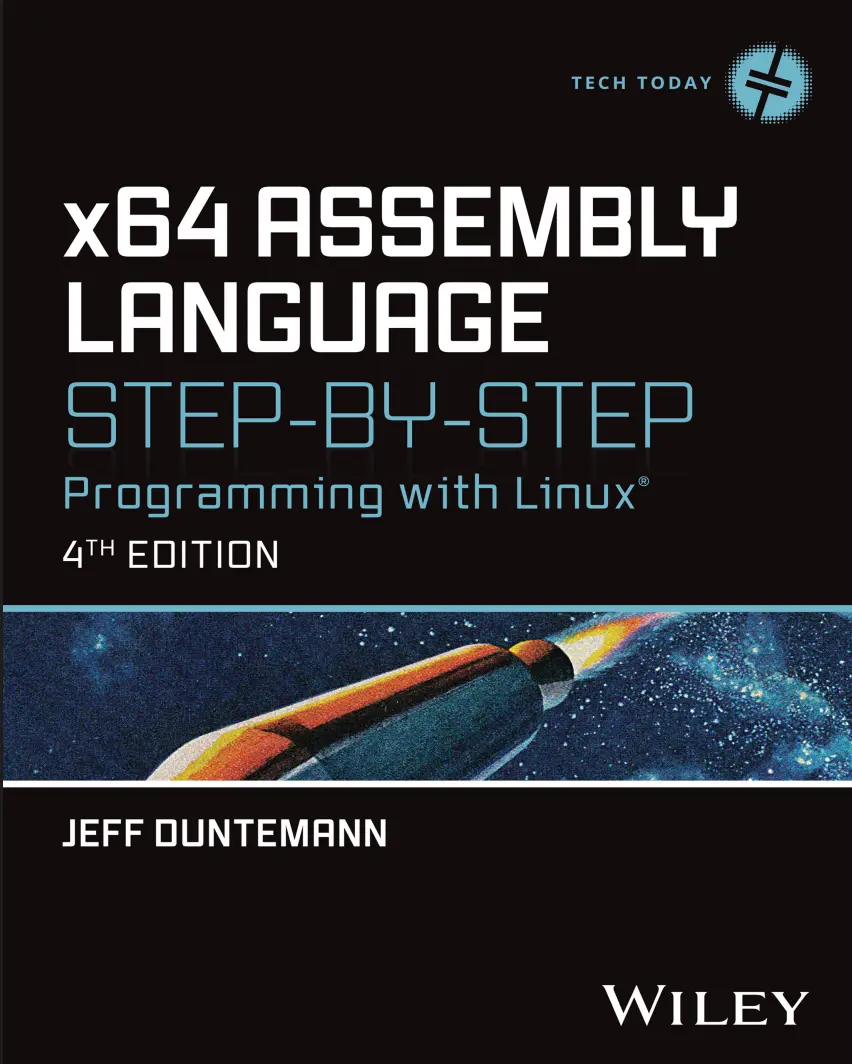
Автор: Jeff Duntemann, Pai Suhas
Дата выхода: 2024
Издательство: John Wiley & Sons, Inc.
Количество страниц: 636
Размер файла: 4,4 МБ
Тип файла: PDF
Добавил: codelibs
Title Page
Copyright Page
About the Author
Acknowledgments
Contents at a Glance
Contents
Introduction
Chapter 1: It’s All in the Plan: Understanding What Computers Really Do
- Another Pleasant Valley Saturday
- Steps and Tests
- More Than Two Ways?
- Computers Think Like Us
- Had This Been the Real Thing...
- Assembly Language Programming As a Square Dance
- Assembly Language Programming As a Board Game
- Code and Data
- Addresses
- Metaphor Check!
Chapter 2: Alien Bases: Getting Your Arms Around Binary and Hexadecimal
- The Return of the New Math Monster
- Counting in Martian
- Dissecting a Martian Number
- The Essence of a Number Base
- Octal: How the Grinch Stole Eight and Nine
- Who Stole Eight and Nine?
- Hexadecimal: Solving the Digit Shortage
- From Hex to Decimal and from Decimal to Hex
- Practice. Practice! PRACTICE!
- Arithmetic in Hex
- Binary
- Why Binary?
- Hexadecimal as Shorthand for Binary
- Prepare to Compute
Chapter 3: Lifting the Hood: Discovering What Computers Actually Are
- RAXie, We Hardly Knew Ye
- Switches, Transistors, and Memory
- Random Access
- The Shop Supervisor and the Assembly Line
- Fetch and Execute
- What vs. How: Architecture and Microarchitecture
- Operating Systems: The Corner Office
- Multitasking Magic
- The Plan
Chapter 4: Location, Location, Location: Registers, Memory Addressing, and Knowing Where Things Are
- The Joy of Memory Models
- Backward Compatibility and Virtual 86 Mode
- Segment Registers and x64
- General-Purpose Registers
- The Instruction Pointer
- The Flags Register
- Math Coprocessors and Their Registers
- The Four Major Assembly Programming Models
Chapter 5: The Right to Assemble: The Process of Creating Assembly Language Programs
- Files and What’s Inside Them
- Binary vs. Text Files
- Endianness
- Assembly Language
- Comments
- Object Code, Linkers, and Libraries
- The Assembly Language Development Process
- Debuggers and Debugging
- Installing the Software
- Step-by-Step Compilation Process
Chapter 6: A Place to Stand, with Access to Tools: Linux and the Tools That Shape the Way You Work
- Integrated Development Environments
- Introducing SASM
- Linux and Terminals
- The Three Standard Unix Files
- I/O Redirection
- Terminal Control
- Using Linux Make
- Debugging with SASM
Chapter 7: Following Your Instructions: Meeting Machine Instructions Up Close and Personal
- Instructions and Operands
- Source and Destination Operands
- Immediate, Register, and Memory Data
- Watching Flags
- Arithmetic Instructions
- Signed vs. Unsigned
- Division
- Reading Assembly Language References
Chapter 8: Our Object All Sublime: Creating Programs That Work
- Sections of an Assembly Program
- Labels and Variables
- The Stack
- Linux Kernel Services via Syscall
- The ABI’s Register Scheme
- Designing Nontrivial Programs
- From Pseudocode to Assembly
Chapter 9: Bits, Flags, Branches, and Tables: Easing Into Mainstream Assembly Coding
- Bitwise Operations (AND, OR, XOR, NOT)
- Shifts and Rotates
- Lookup Tables
- Conditional and Unconditional Jumps
- CMP, TEST, BT Instructions
- x64 Memory Addressing
- LEA Instruction
- Table Translation Techniques
Chapter 10: Dividing and Conquering: Using Procedures and Macros to Battle Program Complexity
- Procedures and the Stack
- Local Labels and Data
- Include Files and Libraries
- Creating and Using Macros
- Macros vs. Procedures
- Console Control Examples
Chapter 11: Strings and Things: Those Amazing String Instructions
- Understanding Strings in Assembly
- REP STOSB and Other String Instructions
- Virtual Screens
- The LOOP Family
- String Searches
- Command-Line Arguments
- Stack Structure and Access
- Program Prologs and Epilogs
Chapter 12: Heading Out to C: Calling External Functions Written in the C Language
- Using GCC and libc Functions
- Calling Conventions
- Stack Frame Setup
- printf, scanf, puts, fgets
- Time Functions
- Random Numbers
- File I/O in C from Assembly
- AT&T Syntax Overview
- Passing More Than Six Parameters
- Working with Command-Line Arguments
Conclusion: Not the End, But Only the Beginning
Appendix A: The Return of the Insight Debugger
- Using Insight
- Stack and Memory Views
- Learn gdb!
Appendix B: Partial x64 Instruction Reference
- What’s Removed from x64
- Flag Results and Instruction Syntax
- Instruction Index (e.g., ADD, AND, CMP, JMP, MOV, MUL, RET, etc.)
Appendix C: Character Set Charts
Index
EULA
The long-awaited x64 edition of the bestselling introduction to Intel assembly language
In the newly revised fourth edition of x64 Assembly Language Step-by-Step: Programming with Linux, author Jeff Duntemann delivers an extensively rewritten introduction to assembly language with a strong focus on 64-bit long-mode Linux assembler. The book offers a lighthearted, robust, and accessible approach to a challenging technical discipline, giving you a step-by-step path to learning assembly code that’s engaging and easy to read.
x64 Assembly Language Step-by-Step makes quick work of programmable computing basics, the concepts of binary and hexadecimal number systems, the Intel x86/x64 computer architecture, and the process of Linux software development to dive deep into the x64 instruction set, memory addressing, procedures, macros, and interface to the C-language code libraries on which Linux is built.
You’ll also find:
A set of free and open-source development and debugging tools you can download and put to use immediately
Numerous examples woven throughout the book to illustrate the practical implementation of the ideas discussed within
Practical tips on software design, coding, testing, and debugging
A one-stop resource for aspiring and practicing Intel assembly programmers, the latest edition of this celebrated text provides readers with an authoritative tutorial approach to x64 technology that’s ideal for self-paced instruction. Please note, the author's listings that accompany this book are available from the author website at www.contrapositivediary.com under his heading "My Assembly Language Books."

